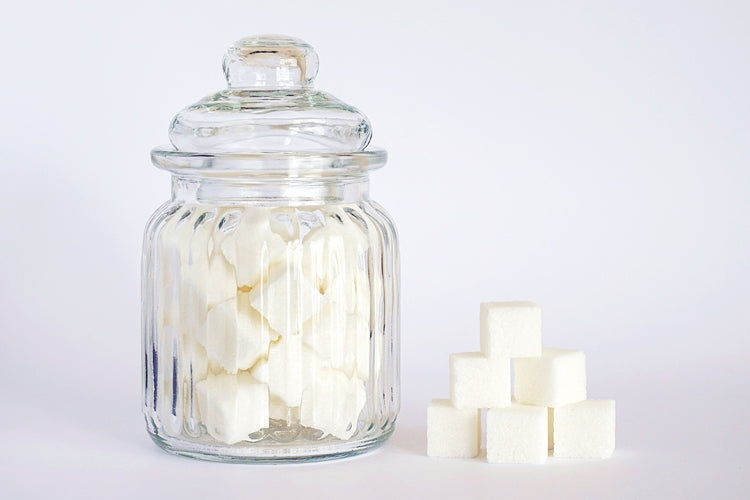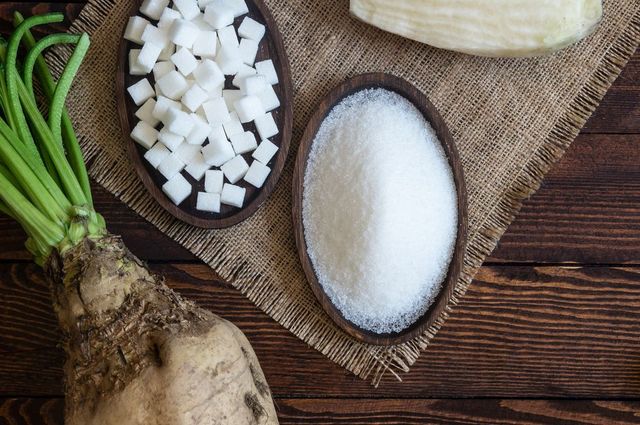Beet Sugar vs Cane: Examining Their Roles in the Global Sugar Industry
Beet Sugar vs Cane: Examining Their Roles in the Global Sugar Industry
Blog Article
Beet Sugar Vs Cane: Discover the Best Choice for Your Sweetening Requirements
The option between beet sugar and walking cane sugar extends past simple sweet taste; it encompasses factors such as flavor profiles, production techniques, and dietary advantages. While both sugars serve similar objectives in culinary applications, their unique qualities might significantly affect your option based upon specific requirements. The natural undertones of beetroot sugar might not enhance every meal, whereas walking cane sugar is typically preferred for its clean taste. As we discover these nuances, it becomes vital to consider which option lines up finest with your cooking goals and wellness preferences. What may amaze you are the ramifications of each choice on your general cooking experience.
Overview of Beetroot Sugar
Beet sugar, frequently derived from the sugar beet plant, is regularly utilized as a key sweetening agent in various food products. The sugar beetroot, a biennial plant, thrives in temperate climates and is mostly grown in areas such as Europe and North America. beet sugar vs cane. The removal process involves cutting the beetroots and removing the juice, which is after that cleansed and crystallized to create granulated sugar
One notable characteristic of beetroot sugar is its chemical composition, which is virtually identical to that of walking cane sugar, as both are composed mainly of sucrose. This similarity allows beet sugar to be used interchangeably with cane sugar in recipes and food production.
Beet sugar is likewise noted for its flexibility in various applications, consisting of baking, drink formulation, and confectionery manufacturing. Furthermore, the beet sugar industry has actually made strides in lasting methods, with numerous producers applying eco-friendly farming techniques.

Overview of Cane Sugar
Walking stick sugar, originated from the sugarcane plant, is among one of the most widely acknowledged and utilized sugar internationally. It is largely composed of sucrose, a disaccharide that provides a pleasant taste account important for different culinary applications. Walking stick sugar is typically found in granulated form however is likewise offered as raw sugar, brownish sugar, and powdered sugar, each serving distinctive objectives in cooking and baking.
The farming of sugarcane projects in exotic and subtropical areas, adding to its extensive accessibility. The plant grows in cozy environments, needing sufficient sunshine and water for optimum growth. Walking cane sugar is usually valued for its natural production technique and very little processing, which protects its taste and nutritional residential or commercial properties.
Along with its culinary uses, walking stick sugar plays a substantial role in the food sector, working as a chemical, fermentation substratum, and texturizing agent. Its versatility prolongs past food, finding applications in beverages, confections, and also cosmetics. With a long history and a solid cultural existence, cane sugar remains to be a favored option for customers looking for an all-natural sweetening choice.
Manufacturing Processes Compared
When comparing the production procedures of beet sugar and walking cane sugar, it becomes clear that each method mirrors the special characteristics of its resource material. Beet sugar production begins with collecting sugar beetroots, which are after that cleaned, cut, and subjected to warm water extraction to dissolve the sugar. The resulting juice undertakes purification via liming and carbonation, followed by evaporation to focus the juice. Crystallization happens, generating raw sugar, which is after that improved to create the last item.
In comparison, walking cane sugar manufacturing includes collecting go to these guys sugarcane stalks, which are squashed to extract juice. The walking cane sugar procedure incorporates a longer milling and pushing phase, which assists in extracting maximum juice from the stalks.
Both processes stress performance, but the approaches highlight distinctions in equipment and energy usage. Beetroot sugar has a tendency to have a more straightforward processing course, while walking cane sugar production can be a lot more complicated as a result of the coarse nature of the walking cane stalks. Ultimately, these distinctions form the features of the sugars created.
Nutritional Profiles and Benefits
Sugar, a staple in several diet plans, varies in nutritional accounts and advantages depending on its resource. Both beetroot sugar and walking cane sugar primarily consist of sucrose, providing comparable caloric content-- roughly 4 calories per gram. Subtle distinctions can influence customer options and assumptions.
Beet sugar is obtained from sugar beetroots, which have little amounts of minerals and vitamins, such as potassium and calcium, yet these nutrients are existing in negligible amounts when eaten in common amounts. On the other hand, walking stick sugar, extracted from sugarcane, might offer similar trace nutrients, yet the distinctions are marginal and greatly trivial in the context of a well i was reading this balanced diet.
One remarkable facet is the environmental impact of each resource, which can indirectly influence dietary choices. Beetroot sugar manufacturing is frequently seen as even more lasting as a result of reduced water use contrasted to cane sugar farming. Furthermore, some people favor beetroot sugar due to its non-GMO standing in particular areas, possibly aligning with health-conscious customer fads.

Flavor Distinctions and Makes Use Of
Distinct taste profiles characterize beetroot sugar and walking cane sugar, influencing their applications in numerous culinary contexts. Beetroot sugar has a somewhat natural preference, which can be attributed to the soil in which the beetroots are expanded. beet sugar vs cane. This refined taste may not be obvious in most dishes, but it can impact the total preference in delicate dishes, such as meringues and particular frostings. Alternatively, cane sugar offers a cleaner, more uncomplicated sweetness that is often liked for baking and treats, as it boosts tastes without outweighing them.
In sensible terms, beet sugar and walking stick sugar can normally be made use of reciprocally in the majority of recipes. Nonetheless, bread cooks and culinary specialists usually lean in the direction of basics walking stick sugar for its premium ability to caramelize, which is crucial in producing intricate flavor profiles in sauces and confections. Furthermore, walking stick sugar is favored in drinks, as its flavor dissolves flawlessly, keeping the stability of the drink.
Ultimately, the option between beetroot and walking stick sugar might boil down to personal choice and the particular needs of the recipe, with each type offering unique features that can improve the culinary experience.
Final Thought
In recap, the choice in between beet sugar and walking stick sugar depends upon certain culinary applications and personal wellness factors to consider. While beetroot sugar offers a slightly natural flavor and sustainable production benefits, walking cane sugar's cleaner sweet taste is usually favored in baking and fragile meals. Reviewing the production procedures, nutritional profiles, and taste distinctions can guide consumers in picking the most suitable sugar for their demands, making certain both taste fulfillment and positioning with nutritional preferences.
Beet sugar, commonly derived from the sugar beetroot plant, is frequently utilized as an essential sweetening representative in different food items. Walking stick sugar is frequently discovered in granulated form but is likewise available as raw sugar, brown sugar, and powdered sugar, each serving distinctive purposes in cooking and baking.
When contrasting the production procedures of beetroot sugar and walking stick sugar, it comes to be clear that each technique shows the distinct characteristics of its source material. Beet sugar production starts with gathering sugar beets, which are after that cleaned, cut, and subjected to warm water extraction to liquify the sugar. Beet sugar tends to have an extra simple handling route, while cane sugar manufacturing can be extra complicated due to the coarse nature of the cane stalks.
Report this page